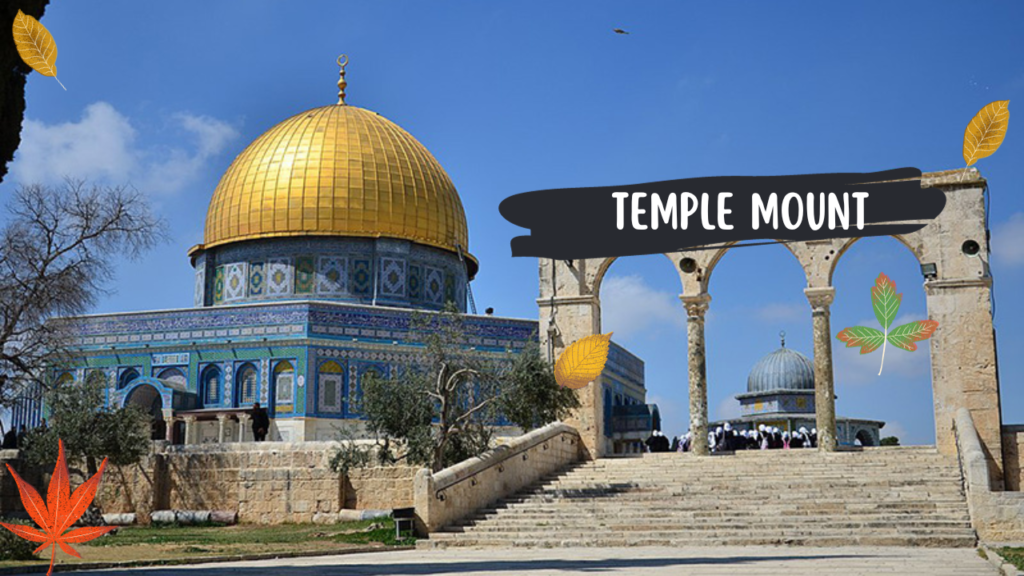The Temple Mount ( Haram al-Sharif): History, Facts & Significance

The Temple Mount, known as “Haram al-Sharif” in Islam, is a significant religious and historical site located in the Old City of Jerusalem. It holds immense importance for three major Abrahamic religions: Judaism, Christianity, and Islam. Here’s a brief overview of its significance:
In Judaism:
Historical Center: The Temple Mount is believed to be the location of two biblical temples:
- Solomon’s Temple (First Temple), built by King Solomon in the 10th century BCE.
- The Second Temple, rebuilt after the Babylonian exile, and later renovated by King Herod in the 1st century BCE.
Spiritual Significance: For Jews, the Temple Mount is the holiest site in the world, representing the presence of God on Earth. It is where they believe God’s Divine Presence (the Shekhinah) resides.
Prayer at the Western Wall: While Jews cannot currently pray on the Temple Mount itself, they gather at the Western Wall, the last remaining retaining wall of the Second Temple, for prayer and reflection.
In Christianity:
- Association with Jesus: The Temple Mount is frequently mentioned in the New Testament. Jesus is described as visiting the Second Temple and engaging in debates with religious leaders.
- Cleansing of the Temple: It is where Jesus is said to have driven out the money changers and merchants, an event known as the “Cleansing of the Temple.”
- Prophecy of Destruction: Jesus is also recorded as predicting the destruction of the Second Temple, which later occurred in 70 CE.
https://youtu.be/XcqvsoA-Yz4?si=Cp7slbLdNfRW5zHb
In Islam:
- Third Holiest Site: For Muslims, the Temple Mount is considered the third holiest site in Islam, after Mecca and Medina.
- Dome of the Rock: The Dome of the Rock, an iconic Islamic shrine, is located on the Temple Mount. It is believed to be the spot where the Prophet Muhammad ascended to Heaven during the Night Journey.
- Al-Aqsa Mosque: Adjacent to the Dome of the Rock, Al-Aqsa Mosque is considered the third holiest mosque in Islam. It is believed to be the location from which Muhammad began his Night Journey.
Historical and Political Significance:
- Centuries of Conflict: The Temple Mount has been at the center of various conflicts throughout history, often due to its profound religious importance to different groups.
- Contemporary Politics: It remains a focal point of tension in the Israeli-Palestinian conflict and is subject to complex arrangements for access and administration.
In summary, the Temple Mount/Haram al-Sharif holds profound religious and historical significance for Jews, Christians, and Muslims. Its importance spans millennia, shaping the beliefs, practices, and historical narratives of these three major world religions.







